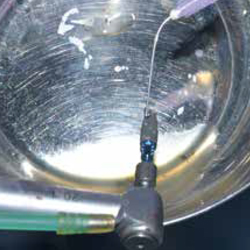Efficacy of application of i-PRF to the surface of implants to improve osseointegration during the healing period: a split-mouth pilot study

Submitted: 17 May 2021
Accepted: 15 June 2021
Published: 19 November 2021
Accepted: 15 June 2021
Abstract Views: 1304
pdf: 1696
Publisher's note
All claims expressed in this article are solely those of the authors and do not necessarily represent those of their affiliated organizations, or those of the publisher, the editors and the reviewers. Any product that may be evaluated in this article or claim that may be made by its manufacturer is not guaranteed or endorsed by the publisher.
All claims expressed in this article are solely those of the authors and do not necessarily represent those of their affiliated organizations, or those of the publisher, the editors and the reviewers. Any product that may be evaluated in this article or claim that may be made by its manufacturer is not guaranteed or endorsed by the publisher.


 https://doi.org/10.23805/JO.2022.14.6
https://doi.org/10.23805/JO.2022.14.6








